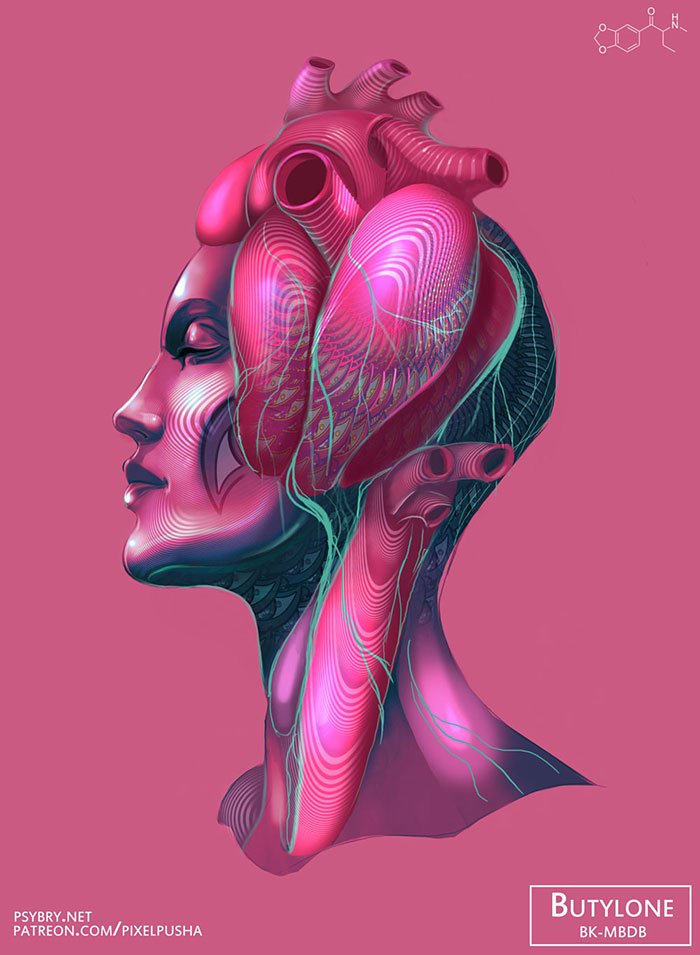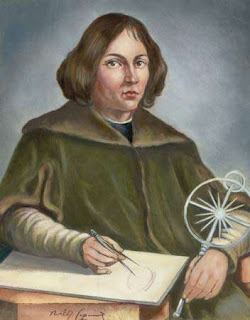Week 7: Neurosci+Art
This week’s course
has shown the artistic approach to the study of neuroscience. The state of mind
is divided into conscious, unconscious, and under chemical influence. While
artists like Suzanne Anker and Giovannic superimposed the FMRI scan of conscious
brains to create the image of vivid butterflies, others, like David Cronenberg,
juxtaposed his art creation process with the unconscious state of dreaming.
However, I resonate the most with the way that chemical stimulants have
inspired artists to recreate the drug-induced hallucination, or simply the rush
of dopamine, through their artwork. This subtle way of incorporating the
products of neuroscience into art epitomizes the marriage of art and science,
and certain adds a spontaneous and unpredictable touch to artwork itself.
 |
| Artist does and makes art |
 |
| Artist does T.H.C. and makes art |
The recent television
show “Patrick Melrose”, starred by Benedict Cumberbatch, incorporates a theme
of drug addiction and substance abuse. The main character, whose life is
heavily reliant on a wide variety of drugs such as cocaine, heroin, Quaaludes,
etc, displays symptoms of hallucination, bipolarity, and schizophrenia.
Although the physiological reaction takes place inside the main character’s head,
the effects are reflected through the sudden change of music, intermittently shaking
camera angles, color fade, and the character’s pace of speech. The character
would be engaged in a normal conservation, and next second experience the full delayed
hit of Quaalude effects. The sense of unpredictability and lack of control is what
captures the audience’s attention, and certainly elevates the level of art
expression throughout the piece. The accurate portrayal of drug effect and the seemingly
unintentional progression of the story flow, walks the audience through the
main character’s stream of consciousness and tricks the viewer’s conscious mind
into accepting Patrick’s altered reality. This is an example of how art can reversely
induce neurological effects.
References
Cartwright, Michael. “How Drugs
Affect the Brain and Central Nervous System.” American Addiction
Centers, americanaddictioncenters.org/central-nervous-system/.
Gardner, Howard. Art, Mind
and Brain: a Cognitive Approach to Creativity. Basic Books, 1998.
Saraiya, Sonia. “Review: Benedict
Cumberbatch Shines as Drug-Addled Aristocrat Patrick Melrose.” The Hive,
Vanity Fair, 9 May 2018,
www.vanityfair.com/hollywood/2018/05/patrick- melrose-benedict-cumberbatch-showtime-miniseries-review.
Tikunova, Paulina. “Artist Takes 20
Different Drugs And Creates 20 Illustrations To Show Drug Effects.” Bored
Panda,
www.boredpanda.com/how-different-drugs-affect-you-artist-illustrations-art-brian-pollett/.
Vesna, Victoria.
“Neuroscience-pt2.Mov.” YouTube, YouTube, 17 May 2012,
www.youtube.com/watch?time_continue=356&v=TFv4owX3MZo.


I never thought about how drug hallucination and the chemical effect on the brain can influence art in the a positive way. In this culture and society, it is easy to view being under the influence as negative or that nothing good can really come out of it. But I agree with you that the artwork that is able to be produced from such chemical stimulations in the brain can create something beautiful.
ReplyDeleteAlike Rebekah, I appreciate how you mention the idea of chemical stimulants in terms of neuroscience and art. It is often that we hear from the voices of the older generation how chemical affects our brain negative, specifically drugs, and that's why our generation is doomed! But this blog tells us, artistically it is pretty darn cool. Also thank you for sharing with us the TV series, Patrick Melrose, now I am intrigued to go give it a watch. After reading your blog, I felt inspired to think about the movie Inception and how it could also be an example of neuroscience and art, and I would definitely include it in my blog if I had the chance to redo it!
ReplyDelete